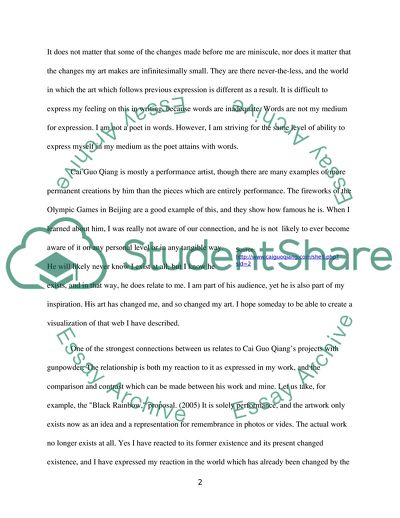Cite this document
(Masterpieces of Cai Guo-Qiang and Butterfly Effect in Art Essay, n.d.)
Masterpieces of Cai Guo-Qiang and Butterfly Effect in Art Essay. Retrieved from https://studentshare.org/performing-arts/1721283-vis-2-class-introduction-to-art-making-motion-and-time-baseda-question-of-the-body-and-its-reflections-as-gesture
Masterpieces of Cai Guo-Qiang and Butterfly Effect in Art Essay. Retrieved from https://studentshare.org/performing-arts/1721283-vis-2-class-introduction-to-art-making-motion-and-time-baseda-question-of-the-body-and-its-reflections-as-gesture
(Masterpieces of Cai Guo-Qiang and Butterfly Effect in Art Essay)
Masterpieces of Cai Guo-Qiang and Butterfly Effect in Art Essay. https://studentshare.org/performing-arts/1721283-vis-2-class-introduction-to-art-making-motion-and-time-baseda-question-of-the-body-and-its-reflections-as-gesture.
Masterpieces of Cai Guo-Qiang and Butterfly Effect in Art Essay. https://studentshare.org/performing-arts/1721283-vis-2-class-introduction-to-art-making-motion-and-time-baseda-question-of-the-body-and-its-reflections-as-gesture.
“Masterpieces of Cai Guo-Qiang and Butterfly Effect in Art Essay”. https://studentshare.org/performing-arts/1721283-vis-2-class-introduction-to-art-making-motion-and-time-baseda-question-of-the-body-and-its-reflections-as-gesture.


